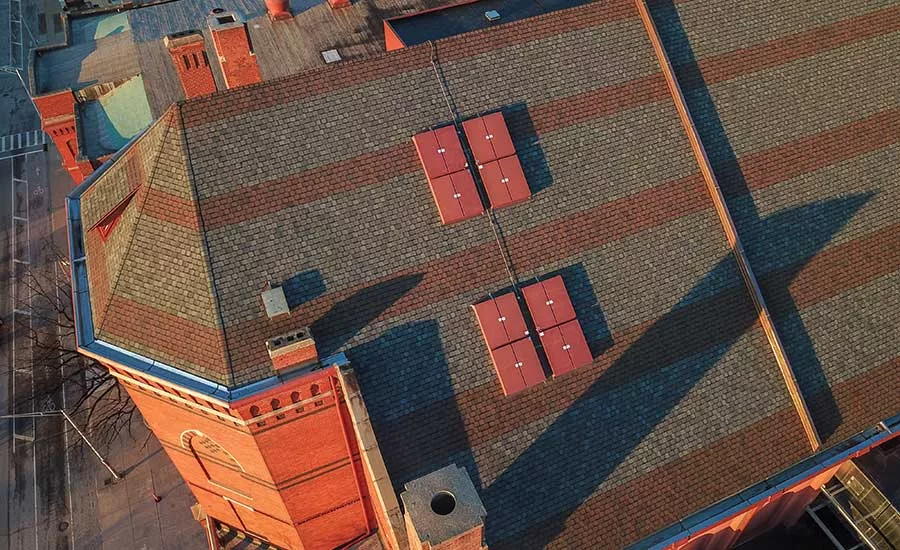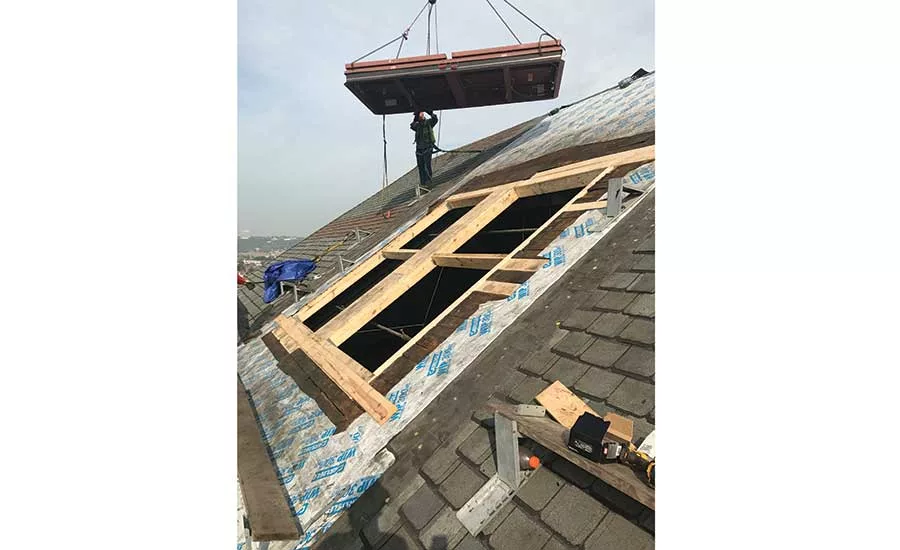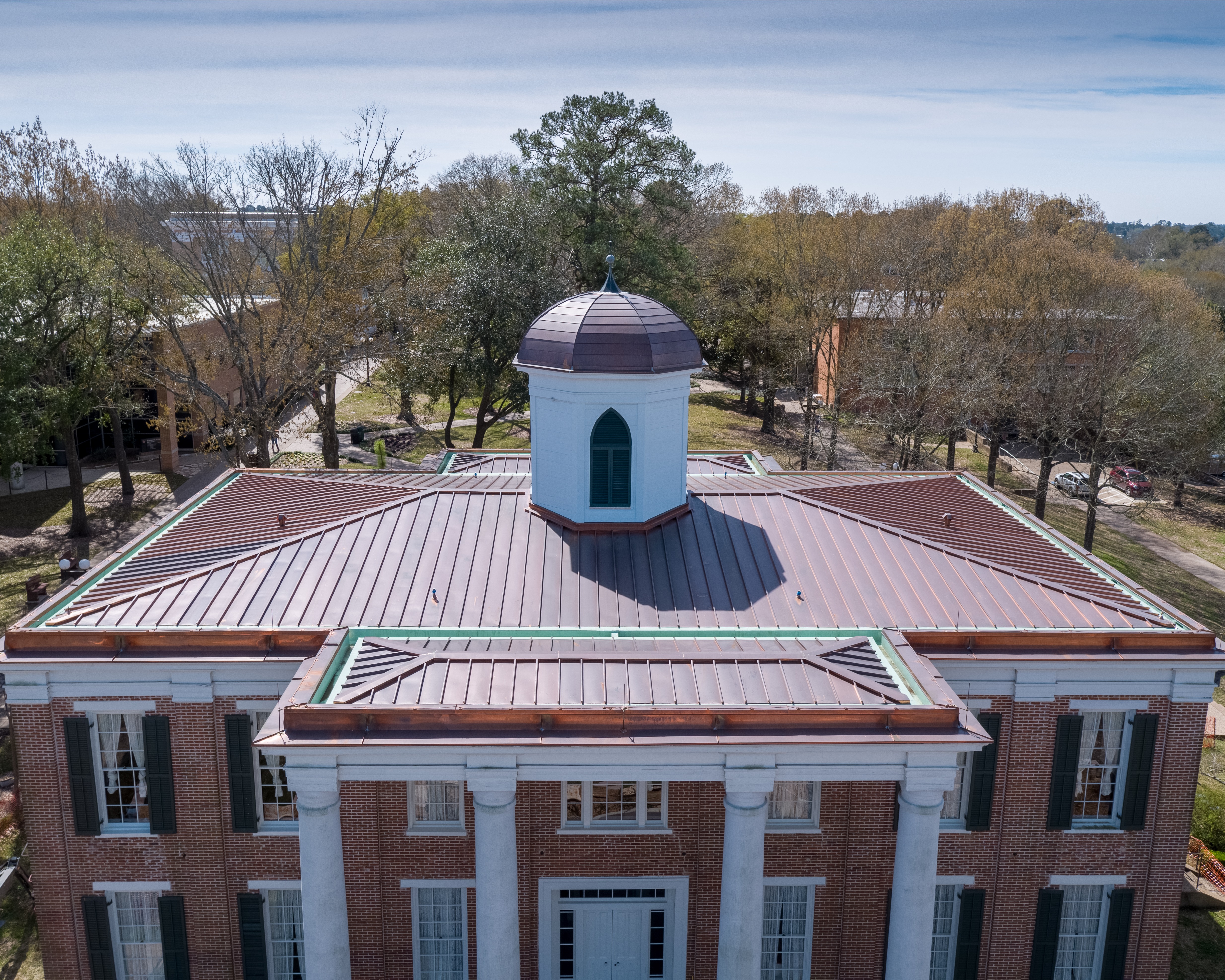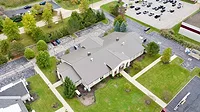Project Profile: Perfect Pitch -- the Cincinnati Music Hall

“The size, complexity and steepness — including steeples — of the project presented a great challenge to the contractor, who managed to install a durable asphalt roofing system that was also visually stunning,” noted officials with the Asphalt Roofing Manufacturers Assocation (ARMA) upon naming the Cincinnati Music Hall reroof the winner of the 2018 Gold QARC Award.

The intricate reroof of the historic Cincinnati Music Hall was a big part of the building’s $143 million renovation, and required crews from Imbus Roofing to continually emphasize safety while working on a compressed production timeline. Photos courtesy of Imbus Roofing.

The intricate reroof of the historic Cincinnati Music Hall was a big part of the building’s $143 million renovation, and required crews from Imbus Roofing to continually emphasize safety while working on a compressed production timeline. Photos courtesy of Imbus Roofing.
Imbus Roofing started roof construction in the late 1800s, and during its more than 130 years in business the safety of its workers has always been a top priority. One of its most recent projects at the historic Cincinnati Music Hall provided one of the most significant safety challenges to date. The size of the building, the steep pitch of the roof and even the church’s steeples required Project Manager Andrew Imbus to take extra caution every step of the way.
“Just setting up the scaffolding was a huge challenge,” Imbus said. “We worked in a very tight footprint. We had to be very careful with every aspect of this project.”
Imbus has been a highly-respected Cincinnati-area business for years, and its fingerprints are all around the Cincinnati community. The company installed the previous roof on Music Hall in 1988. Its other projects in The Queen City include City Hall, the Proctor & Gamble Twin Towers, Paul Brown Stadium and the original Riverfront Stadium. If it’s a big roofing project in Cincinnati, Imbus is likely involved, and in every project, safety has been the company’s primary concern.
“We strive to provide the safest working conditions possible,” Imbus said. “We employ The Cooperative Safety Company to manage the safety aspects of each job. Jobsite safety has been and always will be our company’s top priority. Most accidents can be avoided by using common sense and personal initiative, but we also feel it is important to take extra precautions.”
The Scope
Music Hall, which was recognized in January 1975 as a National Historic Landmark by the U.S. Department of the Interior, serves as the home of the Cincinnati Opera, Cincinnati Ballet, Cincinnati Pops Orchestra and May Festival Chorus.
The facility hosted the 1880 Democratic National Convention and is also the home to the May Festival, whose roots in the city go back to the early 1800s. The May Festival Chorus was the first event held at the Music Hall, which was dedicated on May 14, 1878, the first day of the concert.
Music Hall was designed by Samuel Hannaford, who also designed Cincinnati City Hall. He served as the architect for more than 300 buildings, and his residential designs appear throughout New England, the Midwest and South in the United States. Music Hall’s renovations are part of an investment by Cincinnati to improve the “Over the Rhine” neighborhood and Washington Park, which sits adjacent to the historic structure.
The two-year, $143-million renovation at Music Hall started in August 2015 and finished last October. Work at Music Hall, which is the home of the Cincinnati Symphony Orchestra and several other cultural organizations, reduced seating capacity at Springer Auditorium from 3,417 to around 2,260, depending on different configurations. The project included updates to the exterior, Edyth B. Lindner Grand Foyer, Corbett Tower, Library and Ballroom. In all, the project added 31,549 square feet in the same footprint.
After safely setting up the scaffolding, the size of the project and building steepness challenged Imbus’ crew. The project encapsulated 225,000 square feet and while Music Hall is technically one structure, there are an assortment of extensions, shapes and protrusions. Some points of the roof soar 80 feet high.
The steep-slope roof was installed with CertainTeed’s Grand Manor® luxury asphalt shingles in the colors Stonegate Gray and Brownstone, as well as DiamondDeck® and WinterGuard® underlayments.
Because interior work occurred simultaneously, roofers also had to work quickly to keep the building water-tight daily. The timeline on the roofing replacement was considerably compressed because of all the other projects under way at the time.
The renovation required a full-facility shutdown for more than 15 months. The project included renovations to its centerpiece, Springer Auditorium, along with exterior improvements, seating that decreased capacity but increased comfort, and added code-compliant accessibility for people with disabilities.
“This required a lot of planning,” Imbus said. “Roof replacement was an important part of the project, for protecting the interiors and for the overall look of the building. Since it’s an older building and with all the other work being performed, such as painting, masonry, and HVAC, we had to plan the work very carefully.”
The Concern
Roofing contractors have seen a dramatic rise in the number of fatal injuries from falls, slips and trips, according to the Bureau of Labor Statistics. Statistics released by the Bureau report that several occupations recorded their highest fatality counts in 2016 since the Census of Fatal Occupational Injuries adopted the Standard Occupational Classification System in 2003. In 2016, 101 fatalities occurred in the roofing industry. Fatal work injuries from falls, slips, or trips continued its upward trend in 2016, increasing 6 percent for that year and 25 percent since 2011. Falls increased by more than 25 percent in 2016 for roofers, carpenters and others, according to the report.
Imbus also installed roofing components to ensure the safety of patrons who attend events at the Music Hall. Seven double-leaf smoke hatches, which open electronically if the sprinkler system activates, were also installed to help keep guests safe. The existing smoke vents had been nearly 50 years old. “The new vents allow for the same amount of ventilation as the previous vents, which is all based on fire codes,” Imbus said. “These were the safest solutions for this project.”
The double leaf smoke hatches, manufactured by The BILCO Company of New Haven, Conn., were an important part of ensuring the safety of Music Hall guests. The vents, which measured 66 inches by 144 inches, are among the largest smoke hatches on the commercial market.
The smoke vents include a Thermolatch® II positive release mechanism that ensures reliable vent operation when a fire occurs. The vents automatically release upon the melting of a UL-listed 165F fusible link, and a curb-mounted fusible link allows the latch to be easily re-set from the roof level. The vents are fully insulated and gasketed for weather tightness. The vents are hard-wired to the fire suppression system and open electronically if the sprinkler system activates.
Corken Steel, the local distributor of the smoke vents, and BILCO representative Joe DeFrain of Welling, Inc., worked with Imbus in procuring the roof hatches. The vents were installed above the main hall, Springer Auditorium, and are designed to open in an emergency to allow smoke and hot gases to escape. That creates better visibility and breathing conditions for audience members and performers to evacuate safely.
The Reward
The stellar installation and has not gone unnoticed by the industry. The Asphalt Roofing Manufacturers Association (ARMA) named the project its winner of the 2018 Gold QARC Award.
“The size, complexity and steepness — including steeples — of the project presented a great challenge to the contractor, who managed to install a durable asphalt roofing system that was also visually stunning,” ARMA officials noted in a news release.
While honored to receive the award on the show floor at the 2018 International Roofing Expo in New Orleans, company representatives said they feel a tremendous sense of accomplishment knowing that they’ve preserved a piece of Cincinnati history and culture for decades to come.
“We take pride in our work on many of the iconic buildings in Cincinnati,” Imbus said. “This is a project that we are going to be proud of for a very long time.”
Looking for a reprint of this article?
From high-res PDFs to custom plaques, order your copy today!






